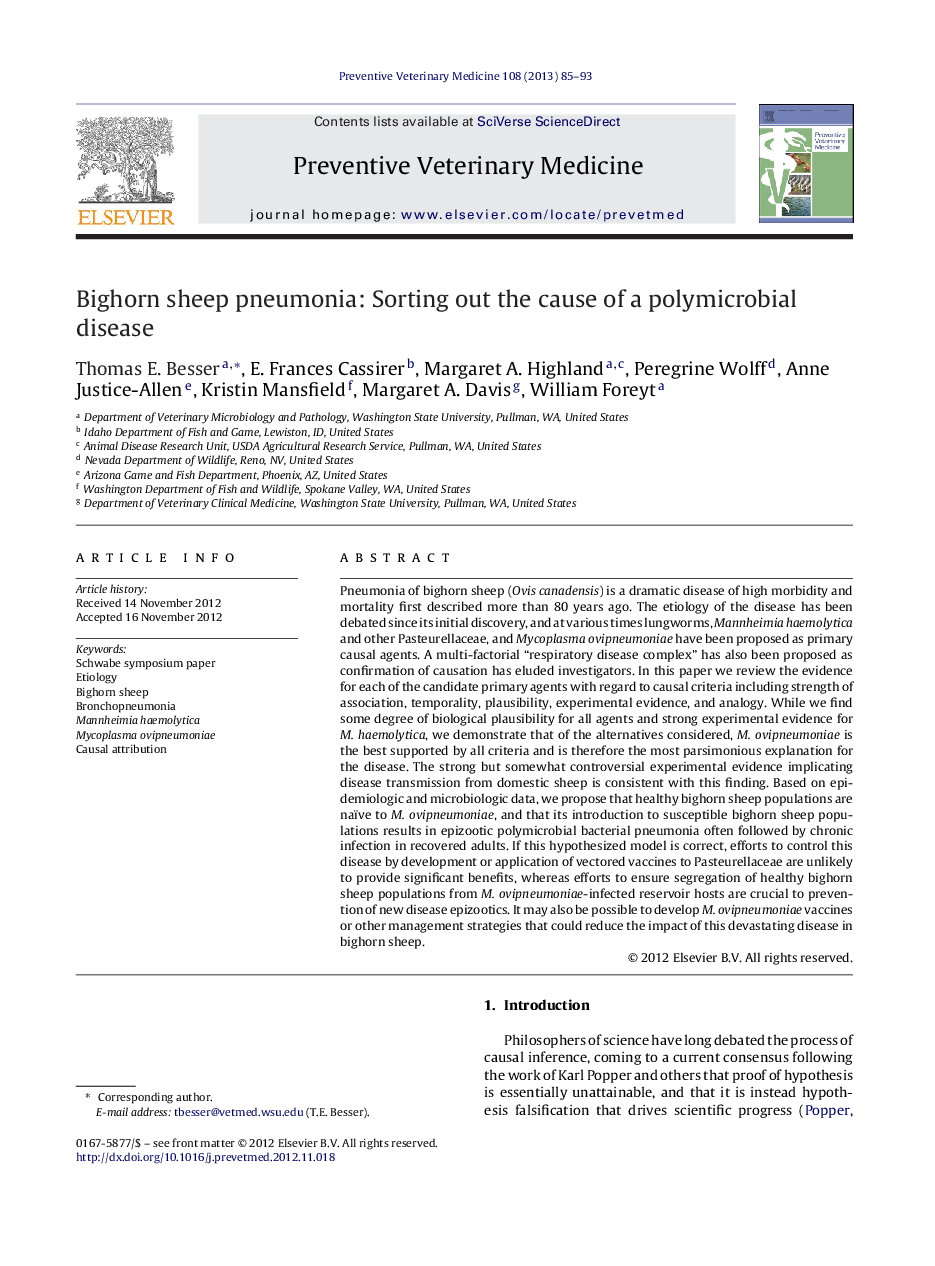| کد مقاله | کد نشریه | سال انتشار | مقاله انگلیسی | نسخه تمام متن |
|---|---|---|---|---|
| 5793991 | 1554185 | 2013 | 9 صفحه PDF | دانلود رایگان |

Pneumonia of bighorn sheep (Ovis canadensis) is a dramatic disease of high morbidity and mortality first described more than 80 years ago. The etiology of the disease has been debated since its initial discovery, and at various times lungworms, Mannheimia haemolytica and other Pasteurellaceae, and Mycoplasma ovipneumoniae have been proposed as primary causal agents. A multi-factorial “respiratory disease complex” has also been proposed as confirmation of causation has eluded investigators. In this paper we review the evidence for each of the candidate primary agents with regard to causal criteria including strength of association, temporality, plausibility, experimental evidence, and analogy. While we find some degree of biological plausibility for all agents and strong experimental evidence for M. haemolytica, we demonstrate that of the alternatives considered, M. ovipneumoniae is the best supported by all criteria and is therefore the most parsimonious explanation for the disease. The strong but somewhat controversial experimental evidence implicating disease transmission from domestic sheep is consistent with this finding. Based on epidemiologic and microbiologic data, we propose that healthy bighorn sheep populations are naïve to M. ovipneumoniae, and that its introduction to susceptible bighorn sheep populations results in epizootic polymicrobial bacterial pneumonia often followed by chronic infection in recovered adults. If this hypothesized model is correct, efforts to control this disease by development or application of vectored vaccines to Pasteurellaceae are unlikely to provide significant benefits, whereas efforts to ensure segregation of healthy bighorn sheep populations from M. ovipneumoniae-infected reservoir hosts are crucial to prevention of new disease epizootics. It may also be possible to develop M. ovipneumoniae vaccines or other management strategies that could reduce the impact of this devastating disease in bighorn sheep.
Journal: Preventive Veterinary Medicine - Volume 108, Issues 2â3, 1 February 2013, Pages 85-93